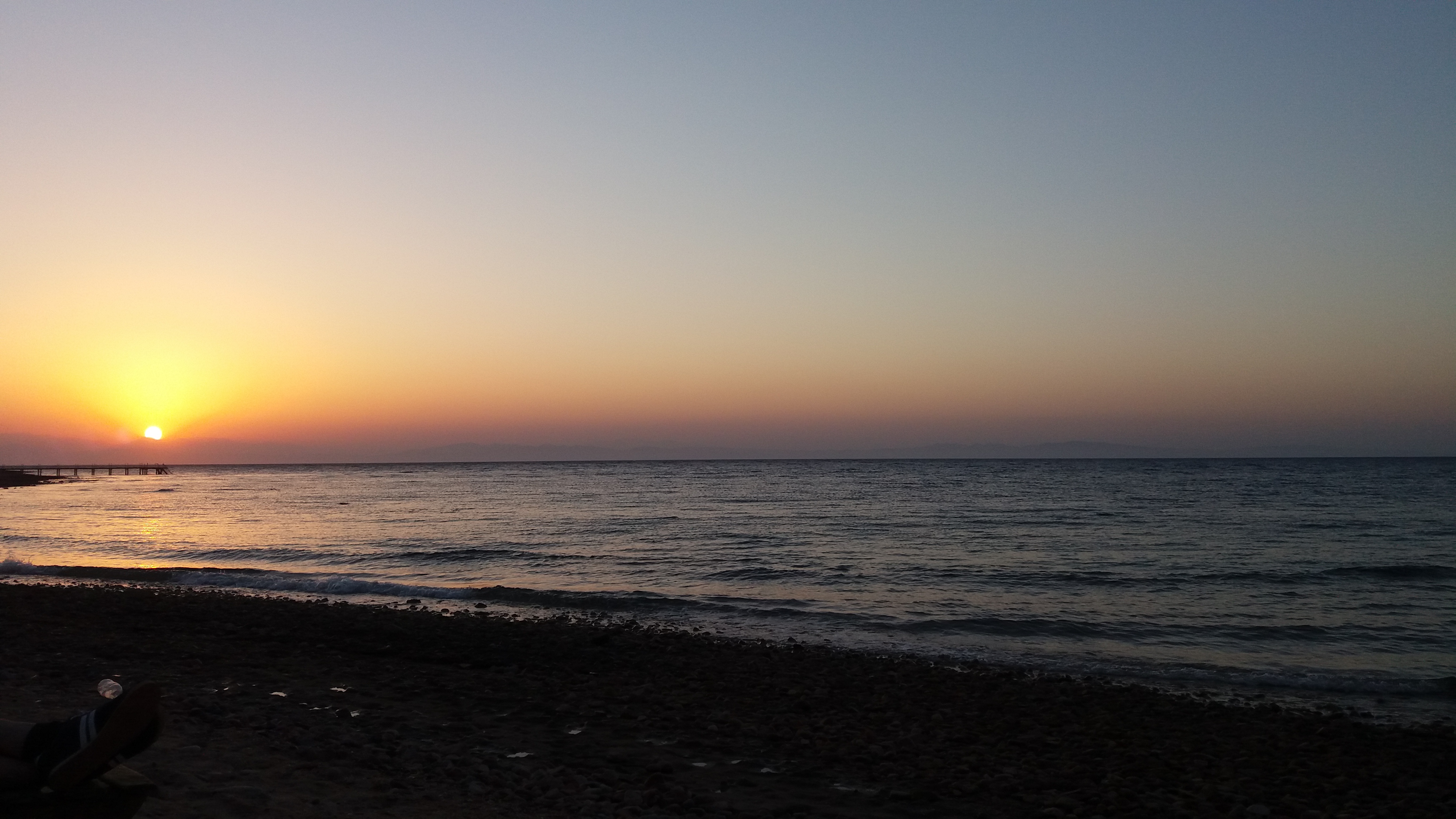Parting Waters
 |
| The Red Sea at sunrise. Image credit: Mohamed Kamal via Wikimedia Commons |
Of all the miracles in the book of Exodus, the most impenetrable to scientific reasoning would seem to be the parting of the Red Sea. By comparison, the Ten Plagues are fodder for a high school Enviro syllabus: Toxic algal blooms or “red tides,” like the annual scourge in Lake Erie, can lead to mass die-offs of marine life - potentially producing an invasion of frogs and the disease-laden insects that they would otherwise have eaten. I’ll get to the rest of the Ten Plagues - locusts, darkness, Slaying of the Firstborn among them - in another blog post. But for now, suffice it to say that climate events like those we are accustomed to in the 21st century loom large in scientists’ understanding of the biblical plagues.
But who has ever seen waters “divided,” so that hundreds or thousands of people could go “through the sea on dry ground, with a wall of water on their right and on their left” (Exodus 14:22)?
It’s the same answer: Climate researchers.
A 2013 paper in the peer-reviewed scientific journal PLOS ONE describes how “strong winds acting on a body of water for a sustained number of hours” can “shift . . . the entire water mass.” The paper’s author, Carl Drews of the National Center for Atmospheric Research in Boulder, was writing about how this phenomenon (called “wind setdown”) affected calculations about the impact of storm surges on Lake Erie. But Drews also applied his modeling techniques to ancient Egypt in a short video showing how wind setdown could have accounted for the Red Sea crossing.
The Hebrew Bible describes the parting of the Red Sea as being caused by “a strong east wind” that blew “all through the night” (Ex. 14:21). These are exactly the type of atmospheric conditions that could expose an otherwise hidden land bridge between two shores, according to Drews. Wind setdown is not as familiar as storm surge, which can cause flooding and property damage. But according to Drews’s PLOS paper, they are equal and opposite reactions of each other in an enclosed body of water. If you hear on the news about a storm surge off a lake or bay, you can be pretty sure that there was wind setdown on the other bank.
 |
| Screenshot of Carl Drews's video about wind setdown in ancient Egypt. |
If you watch Drews’s video closely, however, you will see that he is not modeling the Red Sea at all. His map shows a shallow inland lake in northern Egypt (which he calls the “Lake of Tanis'' but which is closer to today’s Bardawil Lake), separated from the Mediterranean Sea by a short chain of islands. This is because there is some disagreement among scholars over whether the Israelites crossed the Red Sea itself or a lake closer to the Nile River Delta.
Why the confusion? Part of it is that the meaning of the original might have gotten lost in translation over the centuries. The actual Hebrew verses call the body of water that the Israelites traversed yam suf. The Hebrew word yam is used for any large body of water, be it salty like the Mediterranean or fresh like the Sea of Galilee. But suf means “reeds,” plants that can usually be found only in lakes. So there’s a whole group of researchers who advocate for various Egyptian lakes as more likely candidates for the actual location of the miraculously-timed wind setdown that might have enabled the Israelites to escape Pharaoh’s cavalry.
There's a whole group of researchers who advocate for various Egyptian lakes as more likely candidates than the Red Sea for the actual location of the miraculously-timed wind setdown.
Colin J. Humphreys, whose book The Miracles of Exodus I followed closely while writing my trilogy of young adult novels, is not among them. He points out that the eastern fingertip of the salty Red Sea near the present-day Israeli city of Eilat also has reeds growing in brackish water near its shore (p. 192). And he refers to the very first translation of the Hebrew Bible into Greek by a committee of Jewish scholars living in Alexandria, Egypt in the third century BCE. Although they certainly knew that yam suf means “Sea of Reeds,” Humphreys writes, “they preferred to tell their readers where they believed yam suf really was: it was the Red Sea” (p. 175).
In another video explaining how wind setdown might account for the Exodus story, Carl Drews talks about specific underwater geographical features being an integral part of his theory - features that occur in northern Egypt, not at the Red Sea. And filmmaker Tim Mahoney released two documentaries in 2020 proposing that yam suf be understood in the context not of ancient Hebrew, but ancient Egyptian. So there seems to be almost as many candidates for the yam suf crossing as there are for the Mountain of God.
But this apparently least scientifically explicable miracle of the Exodus story actually has a highly reputable scientific explanation. Even if we don’t know where the Israelites crossed yam suf, we have a pretty good idea of how.
 |
| A scene from animator Nina Paley's film "Seder-Masochism" |


Comments
Post a Comment